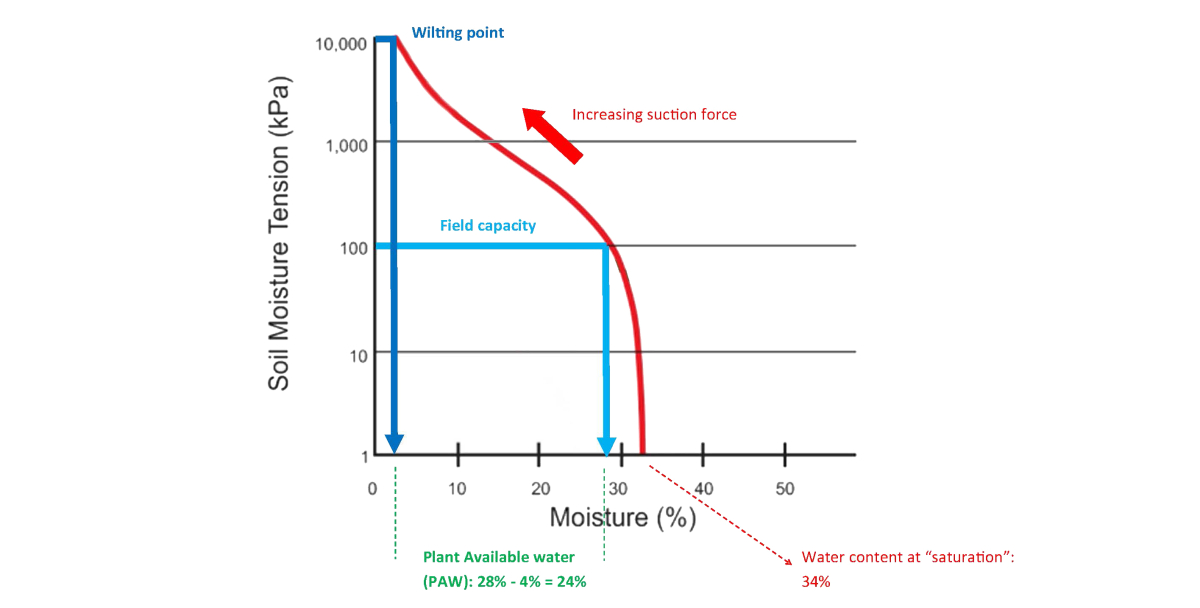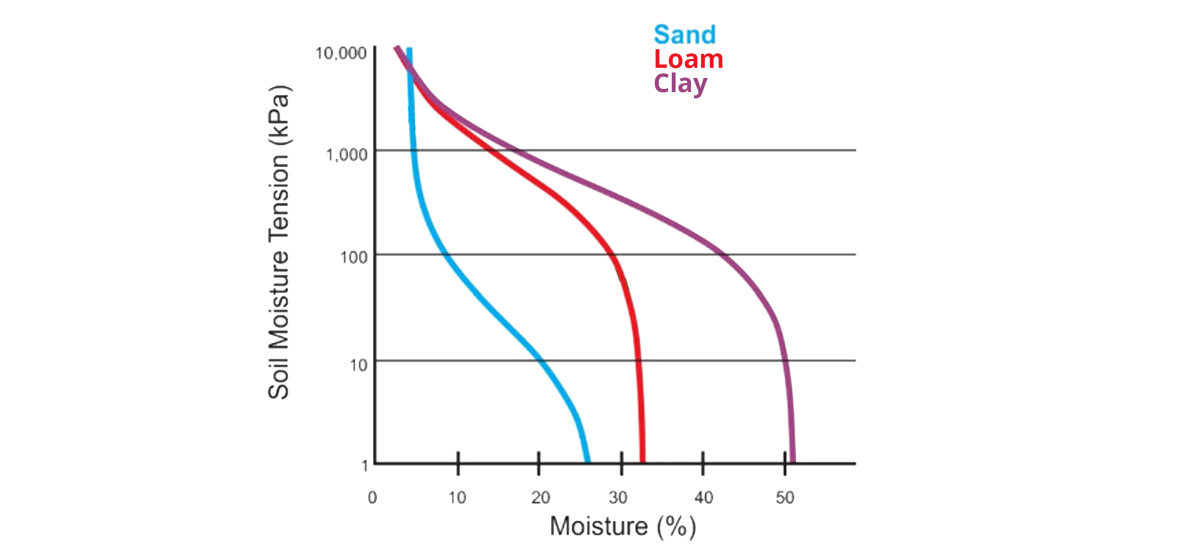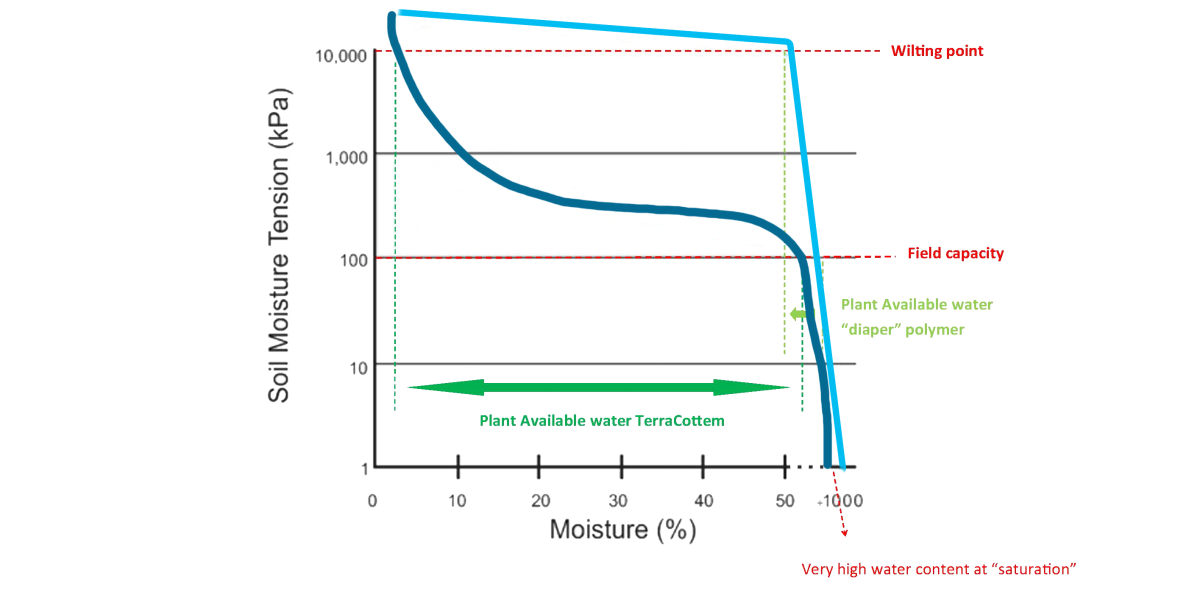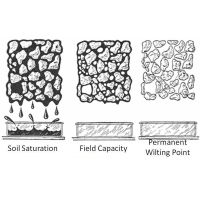- Home
- The higher a soil amendment’s water retention capacity, the more plant available water?
The higher a soil amendment’s water retention capacity, the more plant available water?
23/06/2021 - 00:00
The water retention capacity is not necessarily relevant in terms of performance, as high water retention capacity does not necessarily mean high water availability.
Water retention curve explained…
The relationship between the water content in the soil and the “force” with which the water is retained can be plotted into a graph: the water retention curve (pF-curve) or soil moisture characteristic. The scientifically correct term for that “force” is the “matric potential”:

- At potentials close to zero, a soil is close to saturation. Most water is held in the soil by capillary forces.
- As the matrix potential decreases, binding of the water becomes stronger. The point where excess water has drained away is called “field capacity”.
- At a certain point, with very low matric potential, water is strongly bound in the smallest of pores, at contact points between grains and also as a thin layer around particles: the water is no longer available to the plant. This is called “wilting point”.
- The volume of water between “field capacity” and “wilting point” is referred to as the “plant available water” or PAW.
Sandy, loam, clay and all intermediate soil types all have a different soil moisture characteristics. The same is true for hydroabsorbant polymers or superabsorbers.

Want to know more? Then be sure to read our blog post "Soil and its acronyms" and the section on the pF.
Hydrogels can absorb many times their own weight in water
Most hydroabsorbent polymers can absorb tens to a few hundred times their own weight in water. The superabsorbers (another synonym for these polymers) produced for body hygiene (nappies, sanitary towels, ...) have a specific chemical structure, that binds the absorbed water irreversibly. This means that most of the water in those polymers is located above the wilting point. Which is logical, because otherwise the nappy would "leak". Such polymers are obviously not suitable for plants as there is little or no plant-available water.
However, the polymers incorporated into the TerraCottem mixtures do make more than 95% of this water plant available. In other words, the water is absorbed with a force greater than gravity (which limits leaching into the soil), but lower than the wilting point: the plant roots can absorb the water when they need it.

| The hydroabsorbent polymers in the TerraCottem mixtures have been selected, among other things, for their ability to absorb, retain and release water back to the plant roots. The polymers in TerraCottem have a suction tension that allows the plant roots to absorb water freely, to maintain them hydrated long enough and without them being dried out by the surrounding soil. |
|---|
If you know someone who would also like to read this article, feel free to share:
Take me back to the Frequently Asked Questions
We are happy to answer any further questions:
continue to our webformWe are happy to answer any further questions:
continue to our webformTerraCottem Intl. SL
Apartado de Correos 4511190 Benalup (Cádiz)Spain

